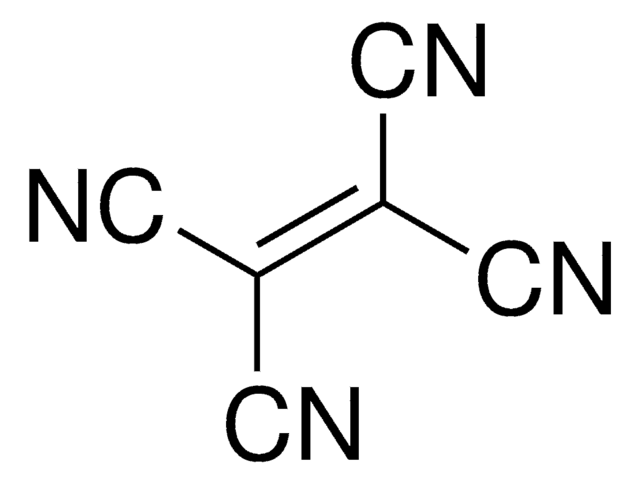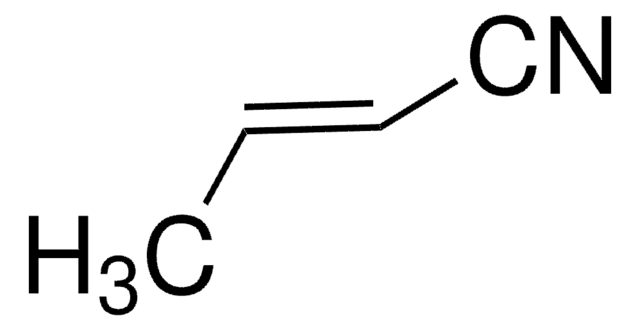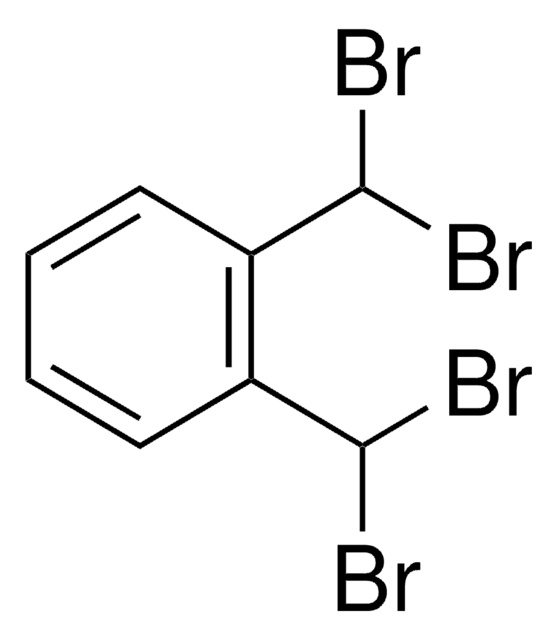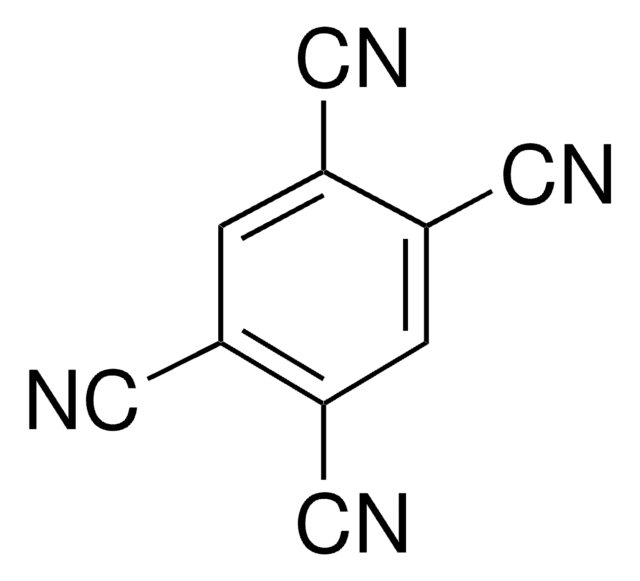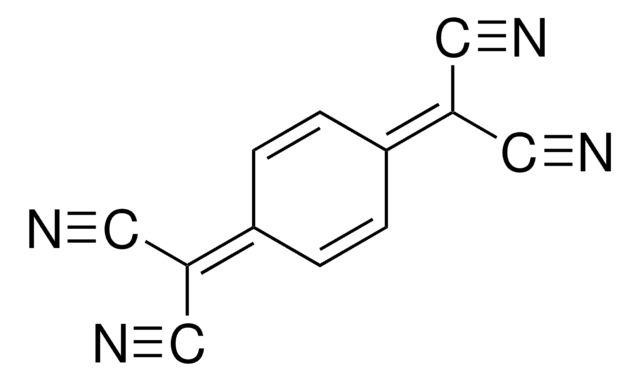추천 제품
Quality Level
분석
98%
형태
solid
bp
186 °C (lit.)
mp
93-95 °C (lit.)
solubility
ethanol: 50 (mg/mL; colorless to yellow)
작용기
nitrile
SMILES string
N#C\C=C\C#N
InChI
1S/C4H2N2/c5-3-1-2-4-6/h1-2H/b2-1+
InChI key
KYPOHTVBFVELTG-OWOJBTEDSA-N
유사한 제품을 찾으십니까? 방문 제품 비교 안내
신호어
Danger
유해 및 위험 성명서
예방조치 성명서
Hazard Classifications
Acute Tox. 3 Oral
Storage Class Code
6.1C - Combustible acute toxic Cat.3 / toxic compounds or compounds which causing chronic effects
WGK
WGK 3
Flash Point (°F)
Not applicable
Flash Point (°C)
Not applicable
개인 보호 장비
Eyeshields, Faceshields, Gloves, type P2 (EN 143) respirator cartridges
이미 열람한 고객
Alicja B Veselá et al.
Applied microbiology and biotechnology, 100(5), 2193-2202 (2015-11-02)
The aim of this study was to discover new nitrilases with useful activities, especially towards dinitriles that are precursors of high-value cyano acids. Genes coding for putative nitrilases of different origins (fungal, plant, or bacterial) with moderate similarities to known
Stéphane Pagès et al.
The journal of physical chemistry. A, 110(24), 7547-7553 (2006-06-16)
The ultrafast ground state recovery (GSR) dynamics of the radical cation of perylene, Pe(*+), generated upon bimolecular photoinduced electron transfer in acetonitrile, has been investigated using pump-pump-probe spectroscopy. With 1,4-dicyanobenzene as electron acceptor, the free ion yield is substantial and
Yinlong Yang et al.
Biomaterials, 33(31), 7803-7809 (2012-07-24)
We report a new strategy of using carrier-free pure near-infrared (NIR) dye nanoparticles (NPs) to achieve highly luminescent NIR fluorescent probes for in vitro and in vivo imaging. Bis(4-(N-(2-naphthyl)phenylamino) phenyl)-fumaronitrile (NPAPF) NPs are shown to exhibit favorable biocompatibility, wide-range pH
R Schlegelmilch et al.
Journal of applied toxicology : JAT, 8(3), 201-209 (1988-06-01)
Two aliphatic nitriles, acetonitrile and fumaronitrile were tested for their genotoxic potential in three mutagenicity test systems: the Salmonella/microsome-assay, an assay using Saccharomyces cerevisiae (strain D7), and the bone marrow micronucleus test. Both compounds were tested with and without metabolic
J M Wyatt et al.
Biodegradation, 6(2), 93-107 (1995-06-01)
Effluent from the manufacture of acrylonitrile is difficult to biodegrade. It contains nine major organic components: acetic acid, acrylonitrile, acrylamide, acrylic acid, acrolein, cyanopyridine, fumaronitrile, succinonitrile, and maleimide. A range of bacteria have been isolated that can grow on, or
자사의 과학자팀은 생명 과학, 재료 과학, 화학 합성, 크로마토그래피, 분석 및 기타 많은 영역을 포함한 모든 과학 분야에 경험이 있습니다..
고객지원팀으로 연락바랍니다.



